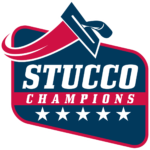Stucco Champions, based in Tucson, Arizona, classifies local exterior stucco into six main categories:
1. Smooth Stucco Texture
- Advantages: Elegant appearance.
- Disadvantages: Walls can appear wavy, with highly visible cracks that are difficult to repair. Cracks usually indicate underlying structural issues.
2. Sanded Stucco Texture
- Advantages: Soft, elegant look.
- Disadvantages: Air voids or sharp textures can be difficult to patch without visible scars.
3. Sprayed Cement Stucco
- Advantages: Quick application and blend well with existing construction.
- Disadvantages: Sharp texture with varying height and density, making patches challenging.
4. Spanish Lace Stucco Finishes
- Advantages: Cracks less than other types, hides defects well, and is stronger.
- Disadvantages: Not considered as elegant as sanded or smooth finishes.
5. Tex Coating Stucco Finishes
- Advantages: Fast application, can be sprayed over wood and pipes.
- Disadvantages: Flakes off over time, making patches difficult and sometimes unreliable.
6. Synthetic Sprayed Stucco Finishes
- Advantages: Great appearance and newer method.
- Disadvantages: Often has air bubbles, requiring multiple paint coats for patches to blend.
Each stucco finish has its own characteristics, advantages, and disadvantages. Proper workmanship and material quality significantly affect the appearance and durability of stucco finishes.
Last week’s post, What is Sand Finish Stucco?, delved into the unique texture and aesthetic appeal of sand finish stucco. We discussed its application process, benefits, and why it’s a popular choice for achieving a durable and stylish exterior.
—
Ready to Work With a Trusted Stucco Repair Contractor? Contact Stucco Champions today for a free consultation! Visit us at Stucco Champions for valuable resources and to learn more about our expert stucco repair services.
